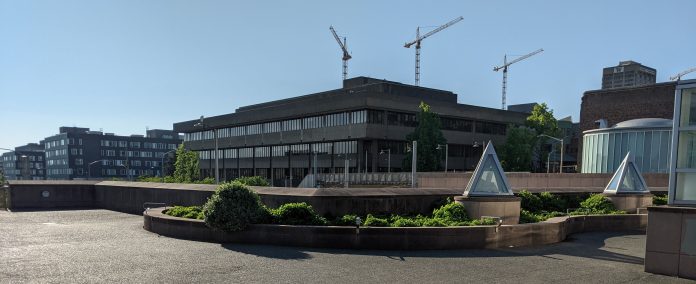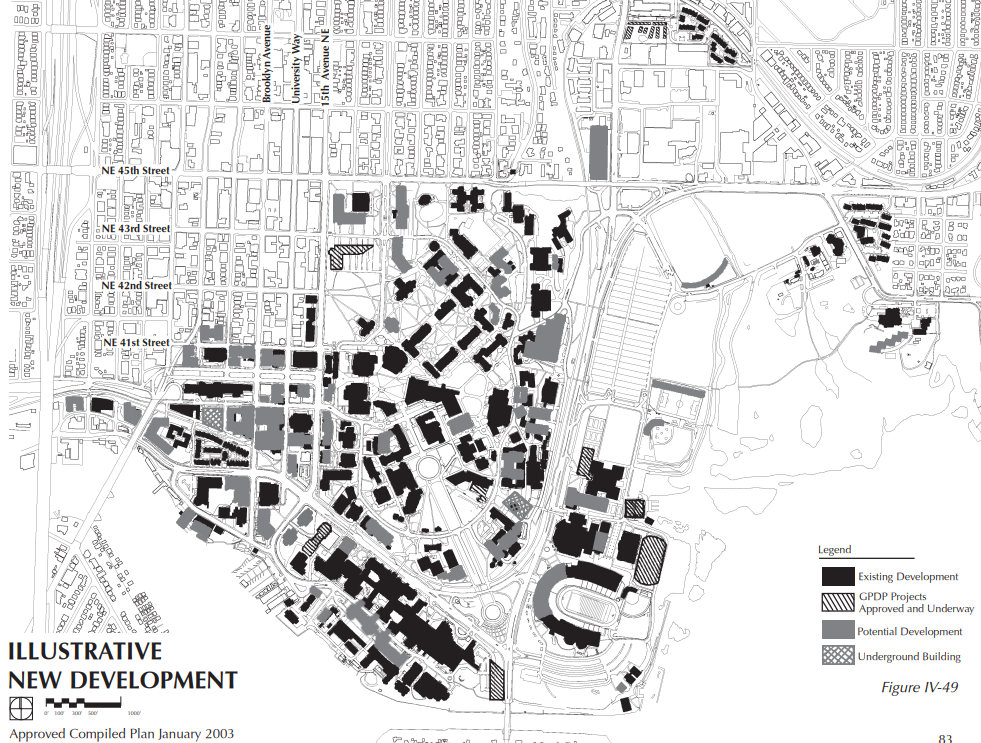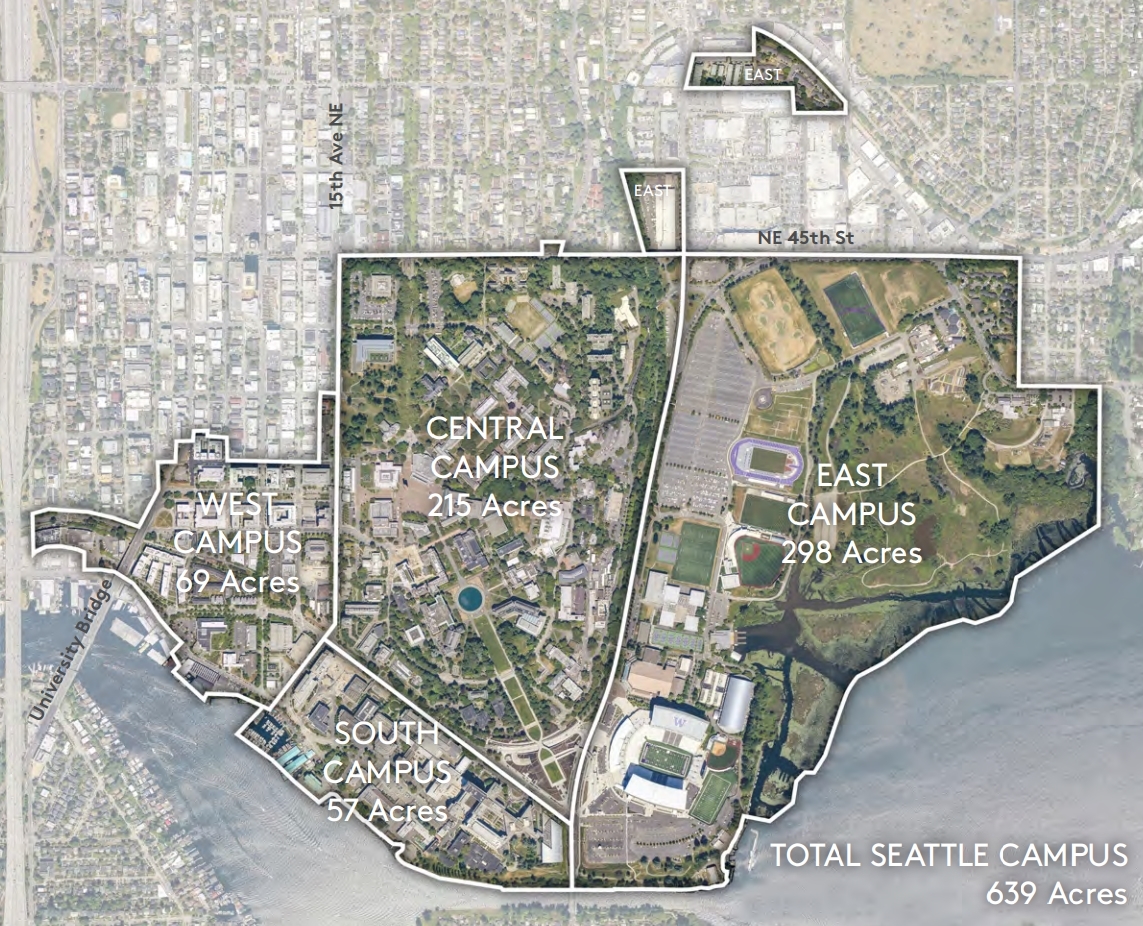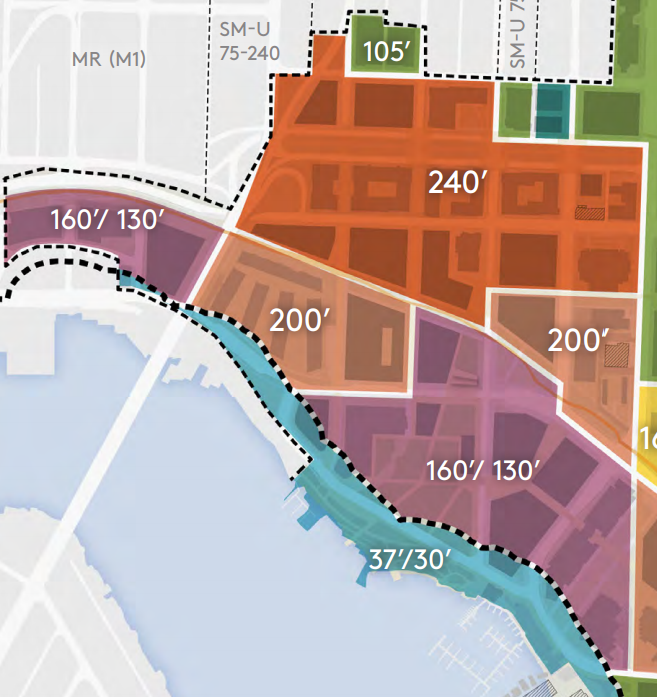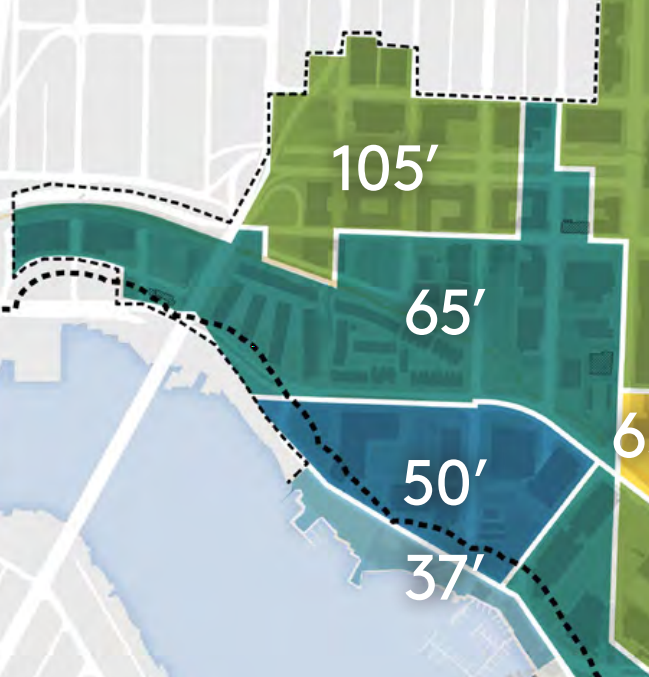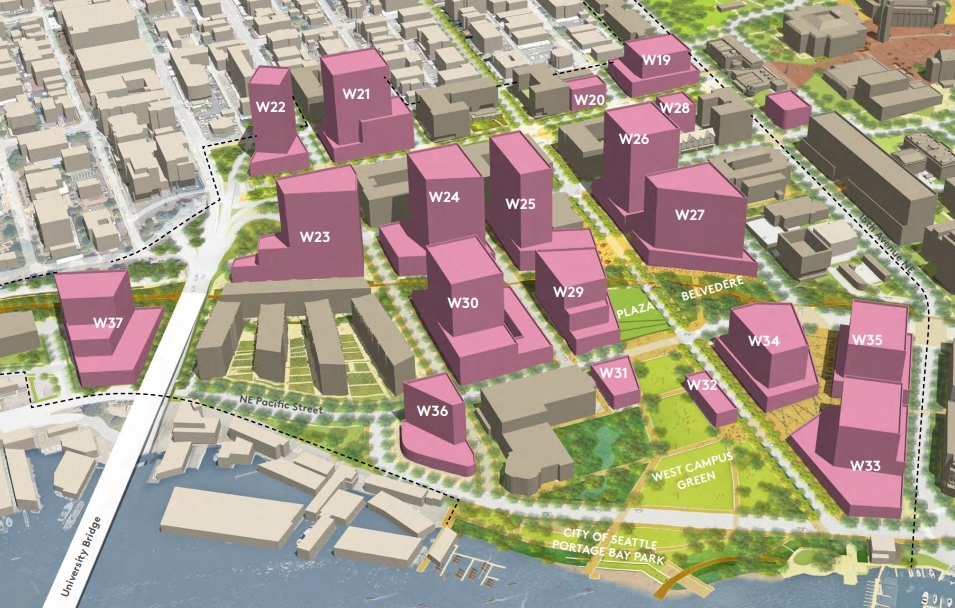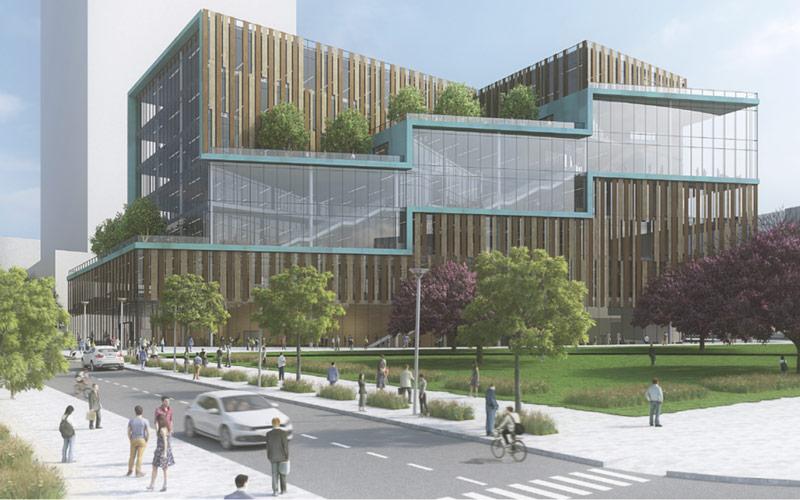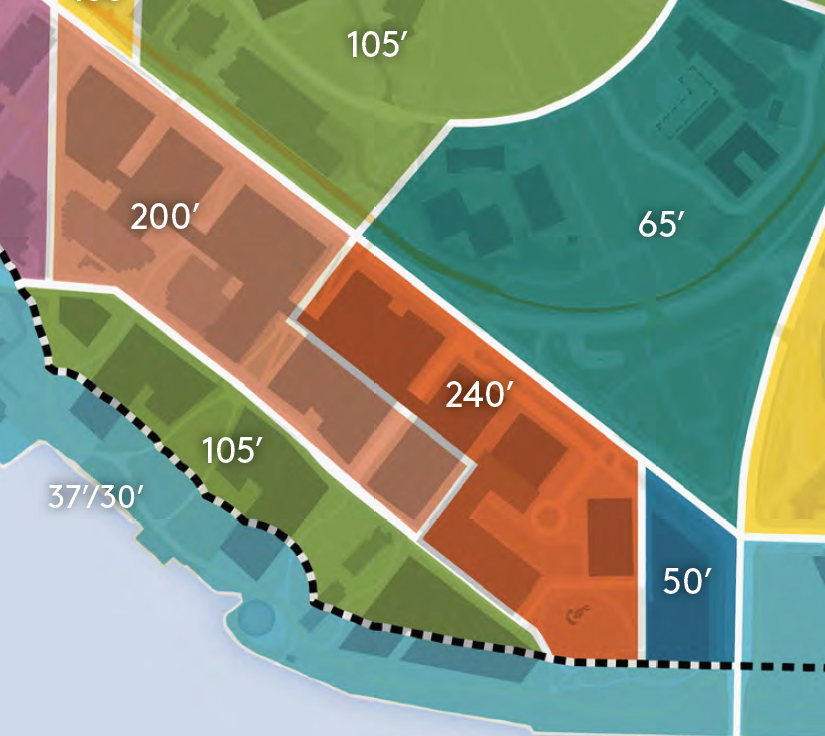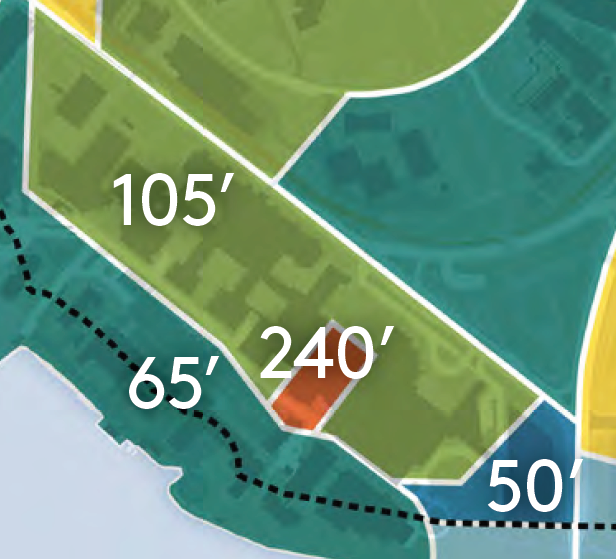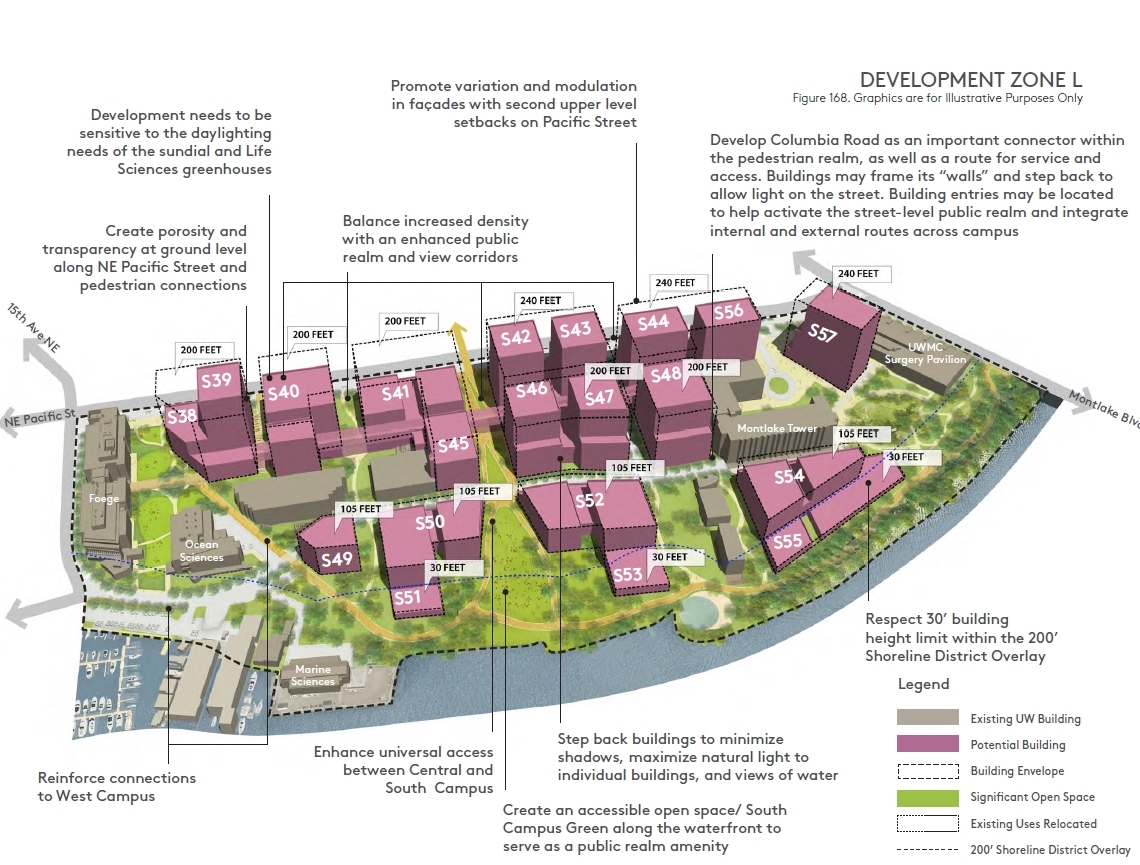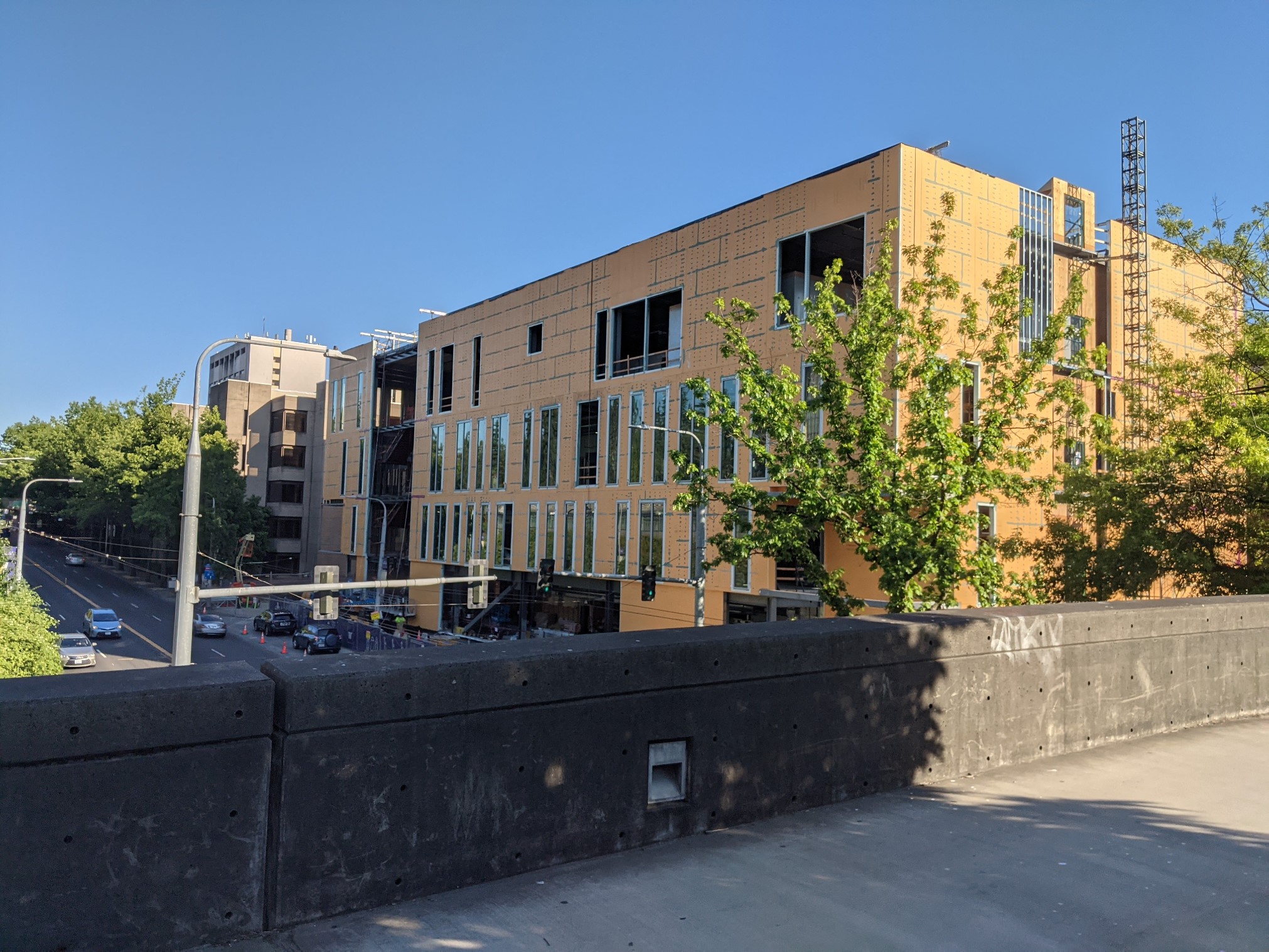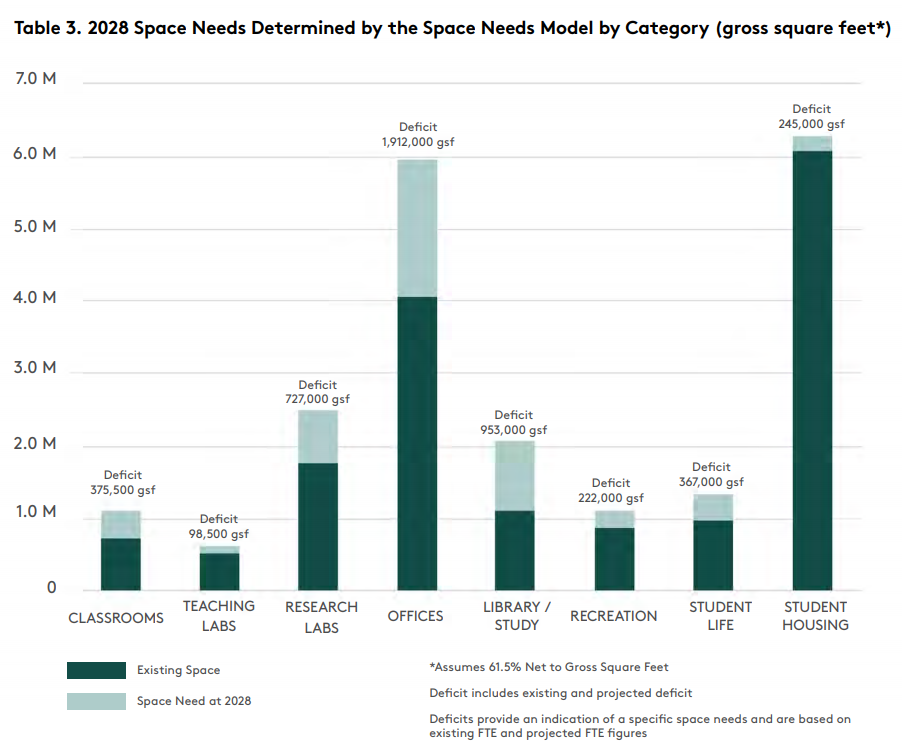With highrises emerging from the University District, neighboring University of Washington (UW) is also preparing to join in on the developing skyline. Of the four divisions that the University of Washington uses to geographically partition its large footprint, West Campus is slated for the most interesting and taller changes. This is partly due to its more liberal zoning, but also its closeness with the rest of the city. The separation by 15th Ave NE with the rest of the campus often makes this part of campus feel more like the University District and the height limits are more akin, too.
In their approved 2019 Seattle Campus Master Plan (CMP), the UW acknowledged West Campus as their most urban of the four campus sectors. The 2019 plan succeeds the 2003 Campus Master Plan of which there is only 210,000 square feet of new development left out of the three million gross square feet (gsf) approved in 2003. The University identifies nearly 12 million square feet of development capacity in its newest CMP and is now allowed to grow six million square feet over the ten-year span of the master plan — though the CMP will remain in effect until the growth allowance is exhausted. Assuming that the University’s allowance is expended by and updated again in 2029, the UW will be allowed to build more than three times as fast as it did between 2003 and 2019.
West Campus and South Campus are receiving the greatest fraction of the maximum development capacity within the span of the 2019 plan. West Campus is slated to take on half of the maximum development capacity, and South Campus is slated for nearly a quarter of the capacity. These sectors are also the smallest of the four campuses, so intensity of construction activity is expected to be high. The main difference between West and South Campus is their existing conditions. South Campus is already well built out with aging midrises. While it’s seen its fair share of student housing built in the past two decades, West Campus is still ripe for change and awash in parking lots and garages along with older low-rise buildings.
West Campus
At just under 11% of UW Seattle’s Campus square footage, West Campus is absorbing 50% of the potential new development of the 2019 CMP with increased height limits. Changes to old height limits range from no change to nearly quadrupling, aligning them with the U District’s zoning. The current limits step down from 240 feet to 200 feet, 160 feet/130 feet, and the Shoreline District Overlay limit of 30 feet.
In this sector, the master plan outlines 19 development sites that could build the sector into the university’s “innovation district.” This early guidance and long-term vision identify roughly 4.4 million square feet of potential development that would replace 800,000 square feet of existing space, totaling 3.6 million square feet of new development. Eighty-three perecent of that full growth capacity is captured for the sector with three million square feet of maximum new development for West Campus in the lifetime of the new CMP.
The long-term vision imagines 12 highrises in West Campus. The other development sites are either constrained by height limits or purposely underdeveloped to create a desired effect. So far, only W27 has seen actual design work done. W27 will be a roughly 340,000-square-foot building that is estimated to have around 14 stories in the CMP. It is currently planned to house the Washington Clean Energy Testbeds, have the Northwest Institute for Material Physics, Chemistry, and Technology operating in it, include space for UW research and education, and provide market-rate leasable spaces for UW partners.
The highrises won’t be the only draw of West Campus, a combined 7.5 acres of green open space is planned to be an anchor of this part of campus in the Longer-Term Vision. This space would be made up of the existing Fritz Hedges Waterway Park (Portage Bay Park) and the Belvedere area, and a proposed West Campus Green and Plaza. The West Campus Green would expand the small open space southeast of the Fishery Sciences building by replacing the John M. Wallace Hall, Marine Studies building, and Fisheries Teaching Research Center. The Plaza would replace some of Stevens Court. Proposed W31 and W32 buildings on the West Campus Green would shirk their 160 feet height limits and instead create small two-story buildings to activate the green space with park amenities and destinations.
South Campus
South Campus also saw significant upzoning in the 2019 plan, matching most of the height limits in West Campus. The smallest sector of the Seattle Campus is already a relatively dense development of midrises, so redevelopment into highrises yields less new square footage. This dynamic makes it so that potential South Campus developments only consume 1.35 million new maximum development or only 23% of the UW’s six million new maximum development limit in the CMP.
The full growth capacity of the sector identified in the CMP is 2.2 million square feet of new development, so the UW is only looking to add 61% of envisioned new square footage to South Campus during the current CMP. Assuming that they’re not looking to demolish newer buildings, the site for a potential highrise (W40) is currently the site of the construction of the new four-story Health Sciences Education building. This building was in planning as the 2019 CMP was being completed, so the long-term vision of South Campus may be in the works for a fair number of decades.
South Campus may feature nine highrises eventually, with 20 development sites in total as a part of the sector’s long-term plan. Similar to West Campus, new open green space is planned with a South Campus Green that would connect Central Campus with the waterfront. This sector’s plans are less ambitious for the green space, but conditions are different here with the existing span of green open waterfront space.
Planning for UW’s future
The 2003 CMP’s legacy is largely marked by the redevelopment and new student housing options in West Campus and the northern part of Central Campus. The UW is now largely done with building housing for its students, but it has committed to building 150 affordable housing units for faculty and staff earning less than 60% area median income (AMI), and no fewer than 300 for staff earning less than 80% of AMI. With student housing at the top of the university’s existing space, office, and other uses are now top of mind.
With the 2019 CMP’s focus on West Campus and turning that sector into its innovation district, it’s no surprise that office and research labs are among the most uses needed by the UW. By 2028, the UW estimates that they’ll need nearly two million square feet of office space and nearly three quarters of a million of research lab space. Proposed sites like W27 are proposed for academic, mixed use, and industry partnership/manufacturing uses. Meanwhile, South Campus’s proposed buildings are primarily just proposed for academic and mixed uses. New library and study space are needed, with planners projecting the nearly a million more square feet needed by 2028.
New green space and stronger pedestrian connections are also a part of the CMP’s overall strategy to reduce emissions and promote space for people. An open space commitment for West, South, and East Campus all require the university to build out respective parts of a continuous waterfront trail before permits can be applied for neighboring sites. These spaces are also important for neighboring U District, which sees benefit from increased nearby green space.
Together the U District and the UW are transforming the image of Seattle just above the ship canal. Combining the two jurisdictions, a possible nearly mile-long skyline emerges from NE 50th St all the way down to Portage Bay. When you include South Campus as a tangent of the U District/West Campus cluster, the potential skyline stretches all the way from I-5 to the Montlake Bridge at nearly 1.5 miles long.
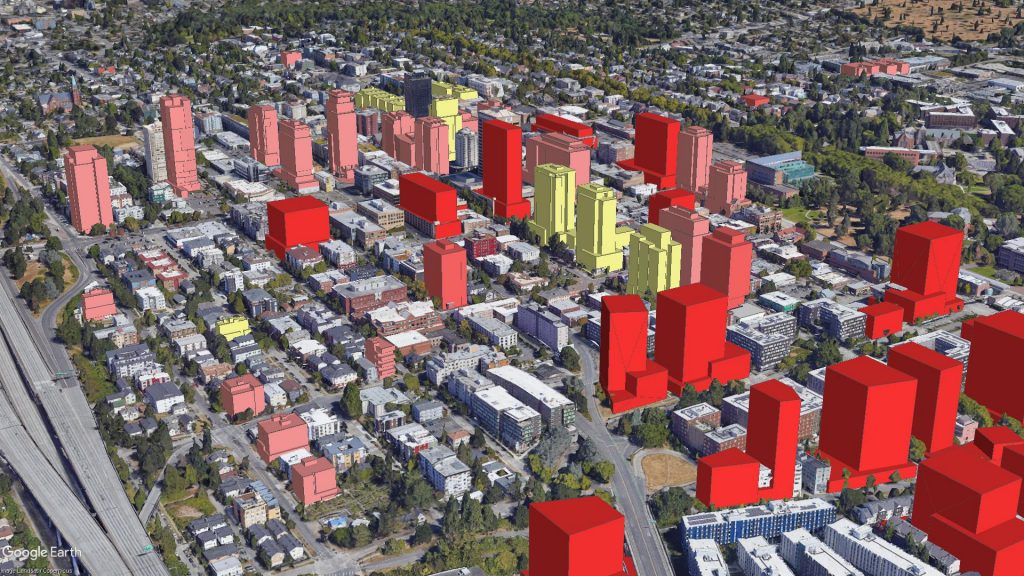
Combined, West and South Campuses make up under 20% of UW Seattle’s campus or 126 acres out of a 639-acre institution. They will also carry 73% of the campus’s potential development in the current plan’s lifetime. The sectors also capture most of the long-term development capacity envisioned for them by the CMP, which could manifest into highrises numbering in the teens for the duration of the 2019 plan. That means we could see over 30 towers rise in the university and its northwestern neighbor, if current permitting and plans all successfully play out in the foreseeable future.
This concludes our series on the U District’s development. Part 1 covered midrise development in the north of the U District. Part 2 covered all the highrise and midrise development in the south of the U District.
Shaun Kuo is a junior editor at The Urbanist and a recent graduate from the UW Tacoma Master of Arts in Community Planning. He is a urban planner at the Puget Sound Regional Council and a Seattle native that has lived in Wallingford, Northgate, and Lake Forest Park. He enjoys exploring the city by bus and foot.

